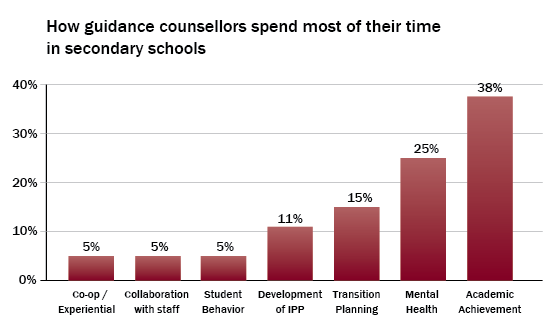School guidance counsellors
In recent years, the role of the school guidance counsellor has expanded beyond the traditional role of providing education and career advice.
Both in policy and practice, guidance counsellors are expected to provide support for students in a wide range of areas, including academic achievement, transition planning, career and life planning, and mental and social-emotional health.
While the Ministry has articulated a number of policies to support these areas and has routinely envisioned guidance counsellors performing a wide range of tasks, funding for guidance counsellors has remained relatively unchanged since the provincial education funding formula was introduced in 1998.

Data from People for Education’s annual report on schools show that in 2016:
- 99% of all secondary schools report having a guidance counsellor.
- In secondary schools, the average ratio is 381 students per guidance counsellor.
Guidance counsellors have a particularly important support role for students in grades 7 and 8. At that time, students are preparing for the transition to high school and choosing courses that can have an impact on their post-secondary options and future careers. They are also undergoing tremendous physical, social, and emotional changes. Despite the significant role that guidance counsellors play, the survey data show that:
- Only 25% of elementary schools with grades 7 and 8 have a guidance counsellor, either full- or part-time.
Geography and school size also affect access to guidance counsellors. In 2016:
- 94% of urban/suburban secondary schools have a full-time guidance counsellor, compared to 74% of small town/rural schools.
- 38% of urban/suburban elementary schools with grades 7 and 8 have access to a guidance counsellor, compared to 10% of small town/rural schools.
